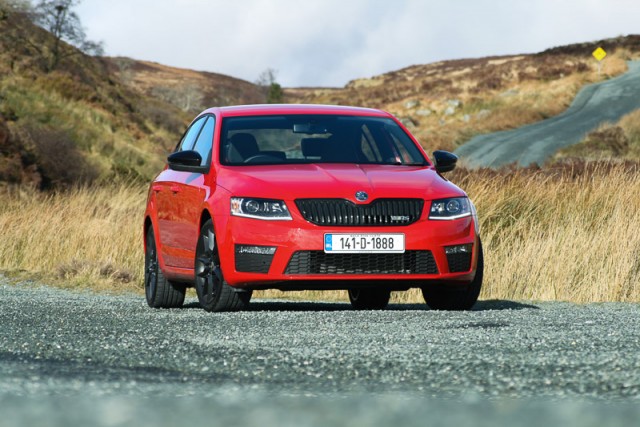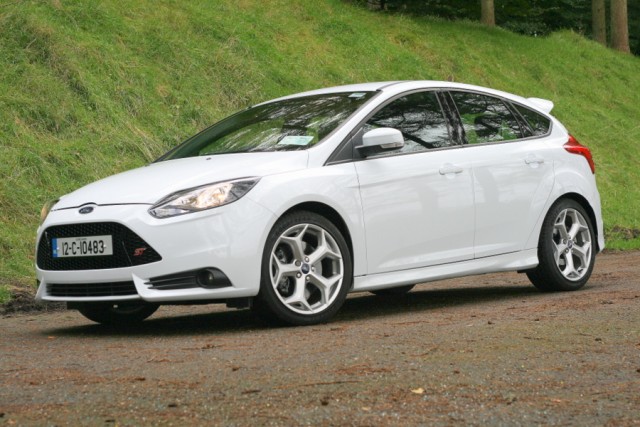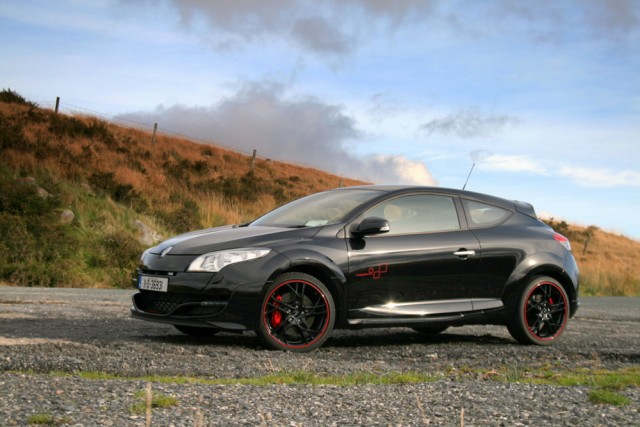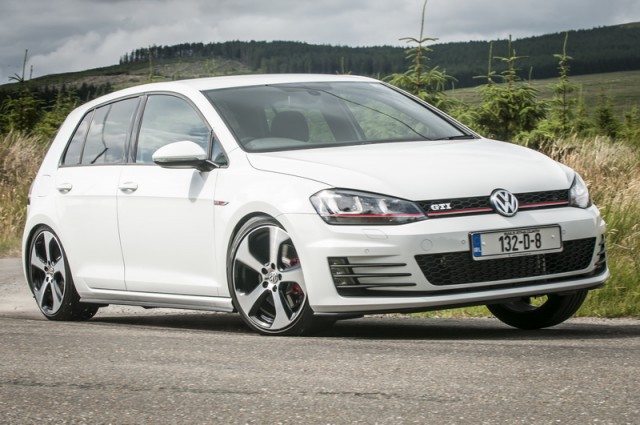Good points: enticing engine and chassis combination, oodles of space, 'Supertone' adds another dimension.
Not so good: not as good to drive as some rivals, interior still a bit dull despite RS additions.
As a team, CompleteCar.ie is asked many questions: what is the trade-in value of my 2004 Nissan Almera? Why is my Opel Astra down on power? Honey, what's for dinner? You get the idea.
Of late though we have had a recurring question: which to choose - the Volkswagen Golf GTI or Skoda Octavia RS? Until recently the default answer has been, if it is petrol powered, go for the Golf, but if it diesel you are after pick the Octavia (ideally in Combi estate spec). Having spent a week with the petrol powered Octavia RS, however, we may have to re-evaluate that response.
In truth this is partially Skoda's own doing. “The fastest ever production Skoda Octavia” was the marketing bumf that accompanied the 220hp third generation RS, and while true it doesn't exactly get your heart beating faster. A fairer and truer description would have been “More practical and cheaper than a Golf GTI” for that is exactly what the Octavia RS is.
Starting with the practicalities, like the Golf and SEAT Leon and Audi A3 and many, many more cars to appear from the VAG stable the Octavia RS is based on the all-singing MQB platform. This means that it is lighter yet stiffer than before and also 11cm longer in the wheelbase than its predecessor. Additionally it is 5cm longer than the other MQB cars so rear seat passengers enjoy near Superb-like legroom (i.e. quite a lot). The boot is also huge, offering a load space of 590 litres with the rear seats in place or 1,580 litres with them collapsed.
But these factors are true for all Octavia models, so where does the RS differ? That begins when you move from the rear seats into the front. There you will find a pair of RS-branded sports chairs that are comfortable yet offer just enough lateral support for when you are... pushing on. There is also a perforated leather multifunction steering wheel and an RS-branded gear knob for the six-speed manual transmission (DSG automatic is also available). Then there is the Drive Mode selector. Included as part of the optional 'RS Challenge' pack (€426) this is where the Octavia begins to pull away from its TDI cousins. Choose Eco or Comfort from the 5.8-inch touchscreen and you may as well be driving a 1.4 TSI Octavia. It is quiet and refined, comfortable even and the perfect weapon for whiling away your morning commute.
Flick over to Sport mode, however, and the nature of the beast changes - the steering weights up in hand, the engine comes alive and the 'Supertone' sound symposer system is activated. Now, such systems have been much derided in the press, with the BMW way of piping sounds through the speakers in particular receiving much flak, but when done properly these systems give enthusiasts the aural feedback they crave when driving without falling foul of ever tightening emissions legislation. And the Skoda system is done properly. Blip the throttle and you are greeted with sonorous flares and blips, while keeping the accelerator pinned on your favourite road just ups the amplification. In short it is addictive and worth the entry price alone - and it gives the RS an advantage over the GTI.
What the GTI does have is the option of active damping, while the Octavia has to make do with a passive system. This is both a good and a bad thing. Good as the Octavia rides better over churned up Irish roads and bad as it does give the GTI the dynamic edge. With the passive dampers and shorter wheelbase the GTI is snappier and more willing to be pushed hard; it has more feedback through the wheel and is ultimately the better drive, but there is not much in it. The hot Octavia has a multi-link rear suspension (unlike the lower powered offerings that have to make do with a less sophisticated torsion beam design), the anti-roll bars have been beefed up and the ride height dropped by 15mm. While ultimately unable to keep up with a GTI it is no slouch either. There is a touch of lean on initial turn in but once the suspension settles it scythes through corners, helped by the advanced XDS+ system that works on both the front and rear axle and can cut power to the inside wheels to keep the car tracking true.
The turbocharged 2.0-litre engine up front is at its best around the 4,000rpm mark where maximum power of 220hp and 350Nm meet. So much so that you may find yourself hanging around in a low gear for too long and cutting the official fuel consumption from 6.2 litres/100km to something a little less palatable. It will be fun though.
And when you are done driving the RS like you are fleeing from a bank job you can flick back over to Eco mode, set the cruise control and stream some music from your smartphone. The RS may not be an out-and-out hot hatch, but if you are the kind of person who spends most of their time driving like a 'normal' person, with the occasional flat-to-the-mat blasts, it may well be the ideal car.
Which now means that our default response to the GTI vs RS question is - drive them both.














































